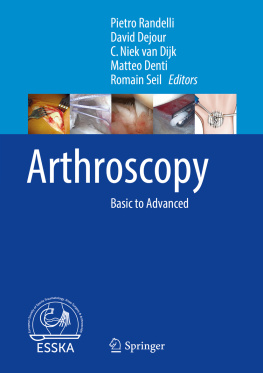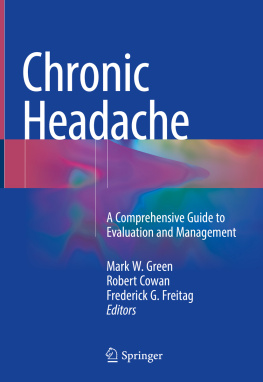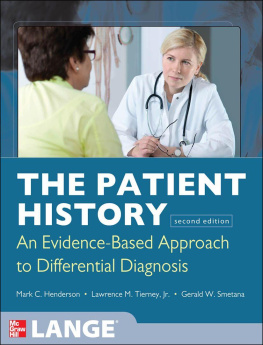1. History of Arthroscopy
The development of arthroscopic surgery can be regarded as one of the milestones in orthopedic surgery within the twentieth century, along with joint arthroplasty and the open reduction and internal fixation of fractures [].
The origin of arthroscopy comes from the Greek arthros for joint and scopein for to look. Physicians have long since attempted to look into body cavities. Its roots can be traced back to the time of the Roman Empire. In the ruins of Pompeii, evidence for the use of vaginal speculums and proctoscopes was made [].
In modern times it was Philipp Bozzini (17731809), a German doctor from Mainz, who first invented a primitive endoscope, his Lichtleiter , to inspect body cavities like the mouth, nasal cavity, rectum, or female bladder. When his invention was presented to the Rome Academy of Science (Italy) in 1806, the potential of his invention was, however, not acknowledged at all [).
Table 1.1
Selected milestones of the history of arthroscopy within the past two centuries
Milestones in the history of arthroscopy |
|---|
1806 | Philipp Bozzini invents his Lichtleiter , the first primitive endoscope |
1853 | Antoine Desormeaux develops a gazogene cytoscope to visualize the bladder |
1860 | Julius Bruck uses a diaphanoscope to transluminate the bladder from the rectum |
1876 | Maximilian Nitze introduces his cystoscope with a heated platinum loop for illumination |
1886 | Maximilian Nitze and Josef Leiter design the first cystoscope with an incandescent light bulb |
1890 | Maximilian Nitze takes the first photograph of the inside of a human bladder |
1910 | Hans Christian Jacobaeus invents his laparo - thoracoscope |
1912 | Severin Nordentoft, the first arthroscopist , presents his results on endoscopy of the knee joint in Berlin |
1918 | Kenji Takagi uses a cystoscope to examine cadaver knees and later patients with tuberculous knees |
1921 | Eugen Bircher started to perform arthroendoscopies to diagnose meniscal pathologies |
1925 | Philip Kreuscher publishes his remarkable article on Semilunar Cartilage Disease |
1931 | Michael Burman performs cadaver studies and publishes his historical paper on Arthroscopy or the Direct Visualisation of Joints , including the first arthroscopic pictures ever published |
1939 | Ernst Vaubel publishes Die Arthroskopie , the first book on arthroscopy |
1954 | Harold Hopkins introduces the principle of glass fiber cold light |
1955 | Masaki Watanabe, the father of modern arthroscopy , develops the concept of triangulation and removes the first tumor arthroscopically |
1957 | Masaki Watanabe publishes his first Atlas of Arthroscopy |
1959 | The Watanabe No. 21 arthroscope is produced in series |
1960 | Harold Hopkins develops rod lens systems for arthroscopes |
1962 | Masaki Watanabe performs the first arthroscopic meniscectomy |
1964 | Robert Jackson is the first foreign doctor to visit Watanabe acquiring his technique of arthroscopy |
1967 | The Watanabe No. 22 arthroscope is the first arthroscope to use cold light |
1968 | Robert Jackson gives first instructional course on arthroscopy at the American Academy of Orthopaedic Surgeons |
1972 | John Joyce is the first to organize private arthroscopy teachings |
1973 | Jan Gillquist promotes the central approach to the knee |
1974 | Richard OConnor performs the first partial meniscectomy in North America |
1974 | The International Arthroscopy Association (IAA) is founded |
1975 | Harold Eikelaar receives the first PhD degree on arthroscopy |
1976 | Robert Jackson and David Dandy publish the first textbook in English on arthroscopy of the knee |
1976 | Lanny Johnson develops the first motorized shaver instrument |
1982 | The North American chapter of the IAA is converted to the Arthroscopy Association of North America (AANA) |
1984 | The European Society of Sports Traumatology , Knee Surgery and Arthroscopy (ESSKA) is founded |
1985 | AANAs journal Arthroscopy : The Journal of Arthroscopic and Related Research (Arthroscopy) is launched |
1993 | ESSKAs journal Knee Surgery , Sports Traumatology , Arthroscopy (KSSTA) commences |
1995 | The IAA and the International Society of the Knee (ISK) assemble to the International Society of Arthroscopy , Knee Surgery and Orthopaedic Sports Medicine (ISAKOS) |
2014 | The Journal of Experimental Orthopaedics (JEO), ESSKAs basic science journal, is introduced |
Half a century later, Antoine Desormeaux (18151882), a French physician from Paris, developed in 1853 a gazogene cytoscope , which used a mixture of gasoline and turpentine to illuminate and a system of mirrors to visualize the bladder. Today, his invention is regarded as the first instrument for endoscopy [].
In 1860 Julius Bruck (18401902), a German dentist from Breslau (now Wrocaw, Poland), transluminated the bladder with a diaphanoscope from the rectum to remove bladder stones [].
The German urologist Maximilian Nitze (18481906) from Berlin introduced a cystoscope in 1876 which already used a heated platinum loop for illumination [] under the supervision of the German pathologist Christian Georg Schmorl (18611932).
After the invention of Thomas Edisons light bulb, Maximilian Nitze and Josef Leiter (18301892), an Austrian surgical instrument maker from Vienna, designed the first cystoscope with an incandescent light bulb for illumination in 1886 []. Maximilian Nitze was also the first to take a photograph of the inside of a human bladder 4 years later.
The Swedish physician Hans Christian Jacobaeus (18791937) from Stockholm invented, together with the Georg Wolf company (Berlin, Germany), his laparo - thoracoscope in 1910. He used this technique for diagnostic purposes in undefined abdominal complaints and functional impairment and as well to treat pleural adhesions caused by tuberculosis [].








